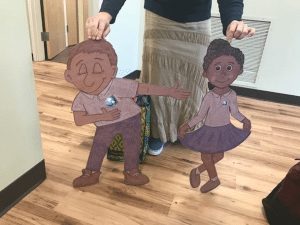Multiple Intelligences in Montessori

The Multiple Intelligence Theory can help you meet your students’ needs in a Montessori classroom. This theory, which takes into account the different kinds of intellectual strengths, is useful when it is understood within the greater context of the Montessori philosophy.
What Is the Multiple Intelligence Theory?
In his 1993 book, Multiple Intelligences, Howard Gardner proposed a theory that instead of one type of intelligence, there are many types, and that people can be intelligent in different ways.
Gardner posits that there are eight types of intelligence:
- Visual-spatial
- Linguistic-verbal
- Interpersonal
- Intrapersonal
- Logical-mathematical
- Musical
- Bodily-kinesthetic
- Naturalistic
He argues that individual intelligences affect how people learn, communicate, and solve problems.
A person with visual-spatial intelligence learns best from diagrams and visual aids and can mentally map out an area. Those with linguistic-verbal intelligence do best when information is presented in words, such as textbooks or lectures.
Interpersonally-intelligent people need time to reflect to learn best, while intrapersonally-intelligent folks need to be able to communicate with others and collaborate.
Logical-mathematical thinkers excel with numbers and data, musically-intelligent people are the Mozart’s of the world, bodily-kinesthetic learners the star athletes, and naturalistic learners the botanists and zoologists of the future.
How Do Multiple Intelligences Work With Montessori?
Howard Gardner’s theory works very well with the Montessori concept to follow the child. Through observation, we learn each students’ strengths and areas of interest, and we find ways to integrate what they gravitate towards into their daily shelf work.
For example, interpersonal learners need to be provided with distraction-free zones to work alone, while conversely, intrapersonal learners should be allowed to socialize during the work period and work with partners when appropriate.
Musically-intelligent children need chances to work with materials like the Montessori bells, and visual-spatial learners will benefit from the red rod extensions. Visual-spatial learners need visual aids to reference during learning, while linguistic-verbal thinkers can simply be told.
However, we don’t want to rely solely on the primary intelligences we see in our children when we go to prepare their environment. It is important to note that areas of intelligence indicate what the child excels in as well as what he enjoys. We must remember the aim to educate the whole child and find creative ways to let students dip their toes into all the facets of education. What we do not want to do is put labels on children or set them on a track that keeps them from expanding into a variety of intelligence areas.
Putting the Multiple Intelligence Theory into the greater context of the Montessori philosophy means that we need to always be attuned to where children are developmentally and which sensitive periods they have entered into. For example, the sensitive period for music is between ages two and six, so we should expect that all children will be fascinated with making music and exploring musical tones at this time. The sensitive period for mathematics ranges from birth to age six, so we want to immerse all children in the language of mathematics throughout the course of early childhood. Moreover, children as a whole are bodily-kinesthetic little movers who love physical exercise and learn from hands-on activities.
Howard Gardner did not say that each person has their own type of intelligence and that was their only way to learn. Instead, the intelligences vary in each person, and a solid education can enhance all of them, even if one or two stand out as dominant. Our aim in the Montessori classroom should be to increase all of the types of intelligence through our knowledge of child development and our ability to differentiate learning for each of our learners.


